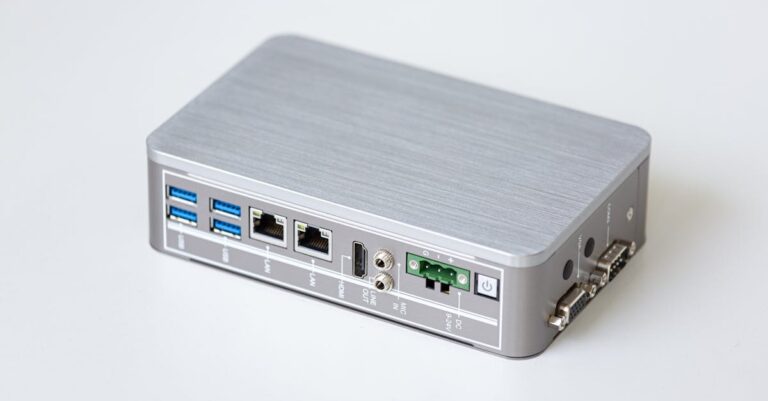Table Of Contents
Examining Firewalls In Broadband Networks | Exploring the Role of Network Firewalls in Broadband Networks
Key Takeaways
- Understanding Network Firewalls
- Hardware vs. Software Firewalls
- Firewalls in Broadband
- Types of Firewalls and Features
- Firewall Architecture and Configuration
- Advantages and Challenges
Examining Firewalls In Broadband Networks | Understanding the Essence of Network Firewalls
Examining Firewalls in Broadband Networks involves a comprehensive understanding of network firewalls and their vital role in safeguarding digital assets. Network firewalls act as the first line of defense, protecting against unauthorized access and cyber threats. Various types of firewall technologies, such as software firewalls, firewall-1, and host-based firewalls, contribute to enhancing network security. Among these, stateful firewalls and application-layer firewalls play a crucial role in monitoring and filtering incoming and outgoing network traffic. Examining Firewalls in Broadband Networks sheds light on the significance of implementing robust firewall solutions to fortify network infrastructure against potential cyber risks.
Examining Firewalls in Broadband Networks | Importance of Network Firewalls
Examining Firewalls in Broadband Networks sheds light on the pivotal role of network firewalls in safeguarding digital environments. These firewalls, including hardware firewalls and software firewalls, act as shields against cyber threats by monitoring and controlling incoming and outgoing network traffic. Within the realm of firewall technology, application-layer firewalls and packet filtering firewalls play crucial roles in filtering data at the application level and inspecting packets for potential security risks.
In the intricate landscape of Examining Firewalls in Broadband Networks, the evolution of firewall technology has led to the emergence of next-generation firewalls and stateful firewalls, each offering advanced features for enhanced security measures. With the continuous advancement in firewall software and hardware, the significance of computer firewalls in network protection cannot be overstated. These robust security measures underscore the importance of investing in effective and dynamic firewall solutions for comprehensive network defense against evolving cyber threats.
Operational Mechanism of Network Firewalls
Examining Firewalls in Broadband Networks unveils the intricate operational mechanisms that safeguard networks. The plethora of firewall types, from hardware firewalls to virtual firewalls, play a pivotal role in fortifying network security. Among these, packet-filter firewalls, stateful inspection firewalls, and next-generation firewalls stand out for their robust protection capabilities within broadband networks.
In the realm of Examining Firewalls in Broadband Networks, application layer firewalls showcase their significance by scrutinizing and filtering data at a granular level. The next generation of firewalls, such as stateless firewalls and spi firewalls, elevate security measures by inspecting packets thoroughly. The amalgamation of these diverse firewall technologies ensures a formidable defense system, often likened to the “great firewall” that shields networks from malicious cyber threats.
Indepth Look at Hardware and Software Firewalls
Hardware and software firewalls play pivotal roles in network security, especially when examining firewalls in broadband networks. Hardware firewalls, like SonicWall, act as the initial defense line against cyber threats by filtering data packets through network protocols. On the other hand, software firewalls, such as stateful inspection firewalls and next-generation firewalls (NGFWs), provide in-depth protection by monitoring and controlling incoming and outgoing network traffic. These firewalls are crucial components in safeguarding sensitive information and systems from cyber attacks and can be likened to the “Great Firewall of China,” which exemplifies a virtual fortress of internet security.
Hardware Firewalls: The First Line of Defense
Hardware firewalls serve as the initial barrier in safeguarding network infrastructure in examining firewalls in broadband networks. These physical devices are strategically positioned between a computer network and the external internet, acting as sentinels that meticulously filter and monitor incoming and outgoing network traffic. By analytically assessing firewalls, potential threats are thwarted before they can breach the network architecture. In examining firewalls in broadband networks, the significance of hardware firewalls lies in their proactive approach to network security, offering an added layer of defense that fortifies the overall protection of networks.
To strengthen the network’s resilience against cyber threats in examining firewalls in broadband networks, hardware firewalls perform rigorous inspections on data packets transiting through the network tap. By scrutinizing the data flow, these firewalls evaluate the legitimacy of network communications and swiftly block any suspicious activity that could compromise network integrity. With an unwavering commitment to examining firewalls in broadband networks, hardware firewalls are pivotal in fortifying the network infrastructure by effectively monitoring and controlling the traffic entering and exiting the network.
Software Firewalls: Ensuring InDepth Protection
Software firewalls play a crucial role in network security, especially when examining firewalls in broadband networks. These sophisticated firewalls operate at the application layer, allowing for granular control over the traffic entering and leaving a network. A software firewall serves as an additional layer of defense alongside hardware firewalls, enhancing the overall security posture of an organization. By configuring specific rules within the available firewall settings, network administrators can set firewalls to monitor and block potentially harmful traffic effectively.
When delving into how firewalls work, software firewalls stand out for their ability to provide in-depth protection against various cyber threats. This type of firewall actively inspects data packets based on predetermined rules, ensuring that only legitimate traffic is allowed to pass through. In the realm of examining firewalls in broadband networks, software firewalls play a pivotal role in safeguarding sensitive information and preventing unauthorized access. With the flexibility to customize firewall configuration based on specific network requirements, software firewalls offer a comprehensive approach to network security.
| Feature | Description | Benefits |
|---|---|---|
| Application Layer Filtering | Inspects and controls traffic based on application-level data. | Allows for more granular security policies and threat detection. |
| Custom Rule Configuration | Enables administrators to set specific rules for different types of traffic. | Provides flexibility to meet unique network security needs. |
| Intrusion Prevention | Detects and blocks suspicious activities in real time. | Reduces risks of data breaches and unauthorized access. |
| Logging and Reporting | Keeps records of traffic and security events. | Facilitates monitoring and auditing for compliance and security assessments. |
Firewalls in Broadband Networks
Examining Firewalls in Broadband Networks reveals the crucial role of network firewalls in safeguarding data. Different firewalls, such as hardware and software options, are fundamental components of a robust firewall system. The choice of firewall depends on the network’s specific requirements and the level of security needed. Implementing multiple firewalls can enhance protection by enforcing distinct firewall policies and conducting various firewall inspections. Layer firewalls, a standard in firewall architecture, provide a comprehensive approach to securing network traffic. Despite their importance, firewall challenges persist in maintaining an effective firewall system that adequately protects firewall data.
Analyzing the Roles of Firewalls in Broadband Networks
Firewalls play a crucial role in safeguarding broadband networks against cyber threats by examining their traffic and permitting or blocking specific data packets. When examining firewalls in broadband networks, it is essential to understand their capabilities in ensuring network security. These firewall solutions leverage various technologies, such as proxy firewalls, to inspect network traffic and apply firewall configurations that align with the organization’s security policies. Active firewalls, which are common in contemporary networks, constantly monitor and filter incoming and outgoing traffic to protect against unauthorized access and potential cyber attacks. By exploring the main firewall technologies and their features, organizations can deploy an effective firewall solution that fortifies their network defenses.
In the realm of broadband networks, analyzing the roles of firewalls unveils their intricate application in securing data transmissions and network activities. Firewall application in broadband networks extends beyond traditional security measures to encompass advanced functionalities that address evolving cyber threats. From inspecting packet headers to deep packet inspection, firewalls in broadband networks offer sophisticated security features that detect and block malicious content in real-time. Understanding these firewall capabilities allows organizations to implement robust network security measures that defend against cyber vulnerabilities and data breaches effectively. Examining firewalls in broadband networks illuminates the significance of deploying firewall solutions that align with the organization’s security requirements and network infrastructure.
How Firewalls Work in Broadband Networks
Firewalls play a crucial role in safeguarding broadband networks by acting as a barrier between internal systems and external threats. Examining Firewalls in Broadband Networks reveals the diverse firewall types available, ranging from physical firewalls to advanced firewalls, each offering unique features and security measures. Modern firewalls have evolved to become more than just a basic built-in firewall, now providing extensive firewall functionality to adapt to the dynamic network firewall landscape.
Understanding how firewalls work in broadband networks entails delving into their architecture and true firewall systems. Firewall type and configuration are key aspects that dictate the effectiveness of firewall administration within a network. These days, firewalls are not just standalone devices; they are integral components of network security, offering comprehensive protection against cyber threats and unauthorized access.
| Firewall Type | Key Features | Use Cases |
|---|---|---|
| Packet Filtering Firewall | Checks packets against predefined rules | Small networks, basic filtering |
| Stateful Inspection Firewall | Tracks active connections, allows return traffic | Corporate networks, higher traffic management |
| Proxy Firewall | Acts as an intermediary between users and the internet | Content filtering, anonymity |
| Next-Generation Firewall (NGFW) | Integrates advanced features like intrusion prevention and application awareness | Enterprise environments, complex threat landscapes |
Diverse Types of Firewalls and Their Features
Network Layer Firewalls and Application Layer Firewalls are fundamental components when Examining Firewalls in Broadband Networks. These intelligent firewalls operate at different levels to provide comprehensive firewall security for varying network requirements. Understanding which type of firewall to choose for a particular network structure is crucial. Network Layer Firewalls focus on packet filtering and routing decisions based on network protocol headers. On the other hand, Application Layer Firewalls inspect traffic at the application layer, providing a more detailed analysis of data. Each type has distinct features such as built-in firewall settings for ease of configuration. The firewall architecture plays a pivotal role in how firewalls operate within a network. Firewalls act as a barrier against unauthorized access attempts while the firewall log analysis helps in identifying potential threats. In broadband networks, the great firewall keeps networks safe by blocking unauthorized traffic.
Network Layer Firewalls versus Application Layer Firewalls
Network Layer Firewalls and Application Layer Firewalls are essential components when Examining Firewalls in Broadband Networks. While network layer firewalls operate at the network level and focus on filtering traffic based on IP addresses and ports, application layer firewalls function at the application level, inspecting and controlling traffic based on specific applications and protocols. The firewall’s job is to act as a barrier between internal and external networks, ensuring that unauthorized access is prevented. In terms of firewall management, network layer firewalls are known for their simplicity in configuration, primarily utilizing basic packet-filtering techniques to enforce firewall rules. On the other hand, application layer firewalls include more sophisticated firewall features, such as deep packet inspection and proxy servers, offering granular control over traffic flow within broadband networks.
When considering the roles of Network Layer Firewalls versus Application Layer Firewalls in Examining Firewalls in Broadband Networks, it is crucial to recognize the distinction between the first firewall encountered by incoming traffic and the subsequent layers of defense. Network layer firewalls are typically the external firewall, placed at the network perimeter to filter traffic before it enters the internal network. These packet-filtering firewalls establish rules based on IP addresses and ports to allow or block traffic. In contrast, application layer firewalls, also known as next-gen firewalls, are internal firewalls that scrutinize traffic at the application level, offering more advanced protection through the inspection of data packets and identification of potential threats. For comprehensive security in broadband networks, a combination of network layer and application layer firewalls can bolster defenses effectively.
Firewall Features and How They Bolster Security
Firewall features play a pivotal role in enhancing security within broadband networks. In the realm of examining firewalls in broadband networks, the evolution of firewall technology has been remarkable. From the basic built-in firewalls of the past to the contemporary firewall technology of today, the landscape has witnessed a significant shift. The advent of first-generation firewalls has paved the way for more advanced systems such as proxy server firewalls, offering heightened protection against cyber threats. In the current firewall technology milieu, the emphasis is on robust firewall controls, depicted in firewall diagrams that illustrate the intricate workings of these security systems.
Delving deeper into the realm of firewall security system, the future of firewalls appears promising. As firewall technology continues to evolve, the focus is on addressing firewall FAQs and refining firewall features to bolster security measures. The emergence of proxy firewalls has added a layer of sophistication to network security, paving the way for more secure data transmission. With a keen eye on examining firewalls in broadband networks, the fusion of advanced technology and proactive security measures is shaping the landscape of cybersecurity. As the demand for enhanced security grows, the integration of contemporary firewall technology is paramount in fortifying network defenses against ever-evolving cyber threats.
- Enhanced protection against cyber threats
- Robust firewall controls
- Illustration of intricate workings in firewall diagrams
- Future focus on addressing firewall FAQs
- Refining firewall features for stronger security measures
- Integration of advanced technology in firewall systems
- Fortifying network defenses against evolving cyber threats
Comprehensive Look at Firewall Architecture and Configuration
Understanding the essence of network firewalls is crucial when examining firewalls in broadband networks. Different firewall types play a significant role in protecting networks from firewall threats. From personal firewalls to cloud firewalls, a well-configured firewall is essential for security. The firewall installation process is critical, ensuring that stateful firewalls track and firewall filters communications effectively. Circuit-level firewalls and deep-packet inspection firewalls add layers of protection to networks. By delving into firewall architecture and configuration, organizations can implement robust security measures for safeguarding their networks.
Understanding Firewall Architecture: How is it Structured
Firewalls are a critical component when Examining Firewalls in Broadband Networks. These security measures act as gatekeepers, determining which data packets are allowed into a network and which are blocked. Various types of firewalls play specific roles in safeguarding network integrity. For instance, packet-filtering firewalls inspect packets based on predefined rules, while circuit-level gateway firewalls monitor TCP handshakes for security. Cloud-based firewalls offer scalable and flexible protection, contrasting with traditional firewalls that are hardware-based. Firewall administrators rely on firewall logs to track traffic and identify potential threats, highlighting the importance of robust firewall logging mechanisms and firmware.
Examining Firewalls in Broadband Networks unveils the intricate structure of firewall protections. Passive firewalls operate unnoticed until a security incident triggers a response, ensuring a covert defense strategy. The configuration of firewall architecture involves fine-tuning settings to align with an organization’s security policies. Understanding the various types of firewalls and their distinct features aids in fortifying network defenses against evolving cyber threats. Firewall administrators must stay vigilant in updating firewall firmware to mitigate vulnerabilities and bolster security measures continually. The dynamic nature of firewall technologies requires constant vigilance and skilled personnel to maintain an effective defense system.
- Passive firewalls offer covert defense strategies by operating unnoticed until a security incident occurs
- Configuring firewall architecture involves fine-tuning settings to align with an organization’s security policies
- Updating firewall firmware is crucial to mitigating vulnerabilities and enhancing security measures
- Firewall administrators rely on firewall logs to track traffic and identify potential threats efficiently
- Various types of firewalls have specific roles in safeguarding network integrity
- Packet-filtering firewalls inspect packets based on predefined rules
- Circuit-level gateway firewalls monitor TCP handshakes for security benefits
Firewall Configuration: Process and Key Considerations
Firewall configuration is a crucial step in the deployment of network security solutions, especially when examining firewalls in broadband networks. It involves setting up and customizing various types of firewalls, such as container firewalls, UTM firewalls, and sonicwall network security devices, to safeguard the network from unauthorized access. Hardware and firmware firewalls play a pivotal role in this process, providing the initial defense line at the firewall entry point.
In the realm of firewall deployment, considerations must be made for various types of firewalls, including cloud firewalls, reverse-proxy firewalls, and circuit-level gateway firewalls. Each firewall abides by distinct principles and offers unique features beyond traditional firewall capabilities. Understanding the configuration process and key considerations is essential to tailor the firewall setup to meet specific security requirements within the context of examining firewalls in broadband networks.
Advantages and Challenges of Firewalls
Examining Firewalls in Broadband Networks reveals the significance of firewall efficacy in safeguarding network integrity. Enterprise firewall capabilities have evolved to address sophisticated cyber threats, enhancing protection levels. The management of firewall tasks, such as configuring key firewall settings and maintaining the firewall rule base, is crucial for robust defense mechanisms. Traditional firewall technology, including packet-filtering firewall filters, has paved the way for advanced solutions like application-layer firewall products. Ensuring an easy-to-use firewall product is essential for seamless firewall change control, contributing to enhanced security measures in Examining Firewalls in Broadband Networks.
Pro’s of Using Firewalls in Broadband Networks
Examining Firewalls in Broadband Networks reveals the myriad benefits of leveraging these security measures. From traditional perimeter firewalls to cutting-edge cloud-native firewalls, organizations can fortify their networks and ensure secure connections. The role of a firewall administrator in managing and optimizing firewall settings is crucial in maintaining a robust defense against cyber threats. With the evolution of technology, firewall vendors are introducing innovative solutions such as learning-powered next-generation firewalls and zero-trust network access (ZTNA) firewalls to enhance network security.
Exploring the diverse cloud-native firewall options underscores the adaptability and scalability of these solutions in modern broadband networks. Digital fortress firewalls provide a comprehensive shield for network connections, offering advanced threat protection and real-time monitoring capabilities. The integration of cloud-native firewalls into network architecture enhances security posture while facilitating seamless management through centralized controls. The continuous advancements in firewall technologies empower organizations to stay ahead of cyber threats and safeguard their networks effectively.
Potential Challenges and Solutions in Firewall Deployment
Potential challenges may arise in the deployment of firewalls within broadband networks due to the complexity of network security systems. Ensuring that firewalls are effectively integrated into the network security stack requires a deep understanding of network security principles and infrastructure. It is crucial to select the right firewall vendor handy with robust network security features that align with the network security solution in place. Constant internet connections necessitate vigilant monitoring as cyber threats evolve, emphasizing the need for a proactive approach when deploying firewalls in broadband networks. Examining Firewalls in Broadband Networks sheds light on the critical role these network security tools play in safeguarding network connections from malicious entities that attempt to exploit vulnerabilities.
Implementing firewall solutions may pose challenges when considering the dynamic nature of network security and the diverse range of threats that may impact network security systems. Firewalls act as a gatekeeper that sniffs network packets to filter out potentially harmful traffic, but configuring them effectively to address evolving threats requires a deep understanding of network security infrastructure. To mitigate potential challenges in firewall deployment, organizations need to remain vigilant and proactive in updating firewall rules and policies to adapt to emerging threats. Examining Firewalls in Broadband Networks underscores the importance of a comprehensive approach to maintaining a secure network environment, where the deployment of firewalls is a crucial component in fortifying network security defenses.
Conclusion
In conclusion, understanding the essence of network firewalls plays a pivotal role in safeguarding network connections in broadband networks. Network security engineers need to delve deep into the operational mechanism of these firewalls to ensure robust protection. Analyzing the roles of firewalls in broadband networks sheds light on how they work effectively to fortify network security. By examining firewalls in broadband networks comprehensively, network security professionals can address potential challenges and deploy solutions efficiently.
FAQS
What are the benefits of using next-generation firewalls in broadband networks?
Next-generation firewalls, a more advanced form of network-based firewalls, offer several advantages for broadband networks. These firewalls examine and analyze network traffic at a deeper level by integrating capabilities like application awareness, intrusion prevention systems, and advanced threat detection and prevention. By assessing firewalls that are more robust and capable, broadband networks can better secure their connection, protect against sophisticated cyber threats, and efficiently manage network traffic.
What is the role of firewalls in securing broadband networks?
Firewalls play a crucial role in securing broadband networks by analyzing and controlling incoming and outgoing network traffic based on a set of security rules. They act as a barrier between a trusted internal network and untrusted external networks, such as the internet, to prevent unauthorized access and cyber attacks. Firewalls can be classified based on their architecture, such as proxy firewalls, application firewalls, or next-generation firewalls, each offering different levels of protection and capabilities. It is essential to choose the appropriate firewall for a broadband network to ensure network security and data protection.
How do firewalls operate in broadband networks and what challenges do they face?
Firewalls, which act as a barrier between a secure internal network and untrusted networks like the internet, play a critical role in securing broadband networks. Examining firewalls in broadband networks involves analyzing how they inspect incoming and outgoing packets based on a set of security rules. This examination also considers the various types and architectures of firewalls, the pros and cons of different firewall configurations, and the challenges faced in ensuring appropriate firewall settings for network security. Some common challenges include managing and monitoring the firewall, ensuring it remains up to date with the latest security measures, and configuring it to prevent unauthorized access while permitting the necessary network traffic. Firewalls in broadband networks constantly have to adapt to evolving threats and network requirements to effectively protect the network from potential cyber attacks.
How are next-generation firewalls different from traditional enterprise firewalls, and what advantages do they offer for securing broadband networks?
Next-generation firewalls differ from traditional enterprise firewalls by incorporating advanced features such as application awareness and intrusion prevention capabilities. They provide enhanced security by inspecting network traffic at a deeper level, offering better protection against modern threats like advanced persistent threats and zero-day attacks. Next-generation firewalls also enable more granular control over network traffic based on applications, users, and content, making them more effective in securing broadband networks.
How important is firewall configuration for securing broadband networks?
Firewall configuration plays a crucial role in securing broadband networks. By appropriately configuring firewall settings, you can control the flow of traffic, monitor network connections, and enforce security policies effectively. Different firewall types, such as application firewalls and proxy firewalls, offer specific benefits for securing broadband networks by inspecting and filtering network traffic to prevent unauthorized access or malicious activities. It is essential to assess firewalls periodically, analyze firewall logs, and update firewall rules to ensure that the firewall is operating effectively in protecting the network from potential threats and vulnerabilities.
How do firewalls in broadband networks analyze incoming and outgoing traffic to secure the network?
Firewalls in broadband networks examine incoming and outgoing traffic by analyzing data packets based on preset security rules. By inspecting factors like source and destination address, port numbers, and the type of protocols used, firewalls can determine whether to allow or block traffic. This examination process helps in safeguarding the network from unauthorized access and potential cyber threats, making sure that only legitimate and safe data is permitted to enter or leave the network.
How does the architecture of firewalls differ in broadband networks compared to traditional enterprise firewalls, and what are the advantages of these differences for network security?
In broadband networks, the architecture of firewalls encompasses specialized features designed to cater to the unique demands of such environments, compared to traditional enterprise firewalls. Next-generation firewalls, commonly used in broadband networks, are equipped to analyze a wide array of internet protocols and application-layer data, providing a higher degree of security. They offer enhanced capabilities such as deep packet inspection, intrusion prevention, and application awareness. These advancements enable the firewall to scrutinize and control network traffic more effectively, ensuring a greater level of protection against evolving cyber threats.
What are the different types of firewalls commonly used in broadband networks and how do they contribute to network security?
In broadband networks, various types of firewalls are utilized to enhance network security. Some common firewall types include next-generation firewalls, proxy firewalls, and application firewalls. Next-generation firewalls offer advanced features and capabilities compared to traditional firewalls, such as the ability to analyze incoming and outgoing traffic more thoroughly. Proxy firewalls act as intermediaries between internal and external networks, while application firewalls focus on monitoring and controlling specific applications to prevent unauthorized access. Each type of firewall plays a crucial role in securing broadband networks by inspecting and filtering traffic based on predefined rules and policies to mitigate potential threats.
How does a firewall secure broadband networks and what is the significance of appropriate firewall configuration in this context?
Firewalls play a critical role in securing broadband networks by monitoring and controlling incoming and outgoing network traffic based on predetermined security rules. Proper firewall configuration is crucial as it determines how effectively the firewall can filter and block unauthorized access attempts, protect against cyber threats, and ensure network security in a broadband environment.
How does a proxy firewall differ from other types of firewalls commonly used in broadband networks, and what advantages does it offer for network security?
A proxy firewall, unlike other types of firewalls commonly used in broadband networks, acts as an intermediary between internal and external networks. It examines incoming and outgoing traffic at the application level, providing an additional layer of security by hiding the true network addresses. This type of firewall permits granular control over the types of network connections that are allowed, enhancing security measures.







